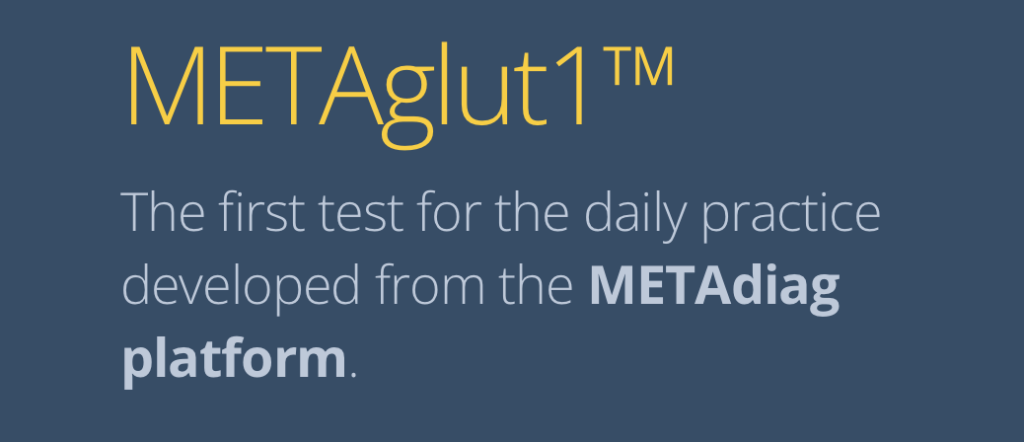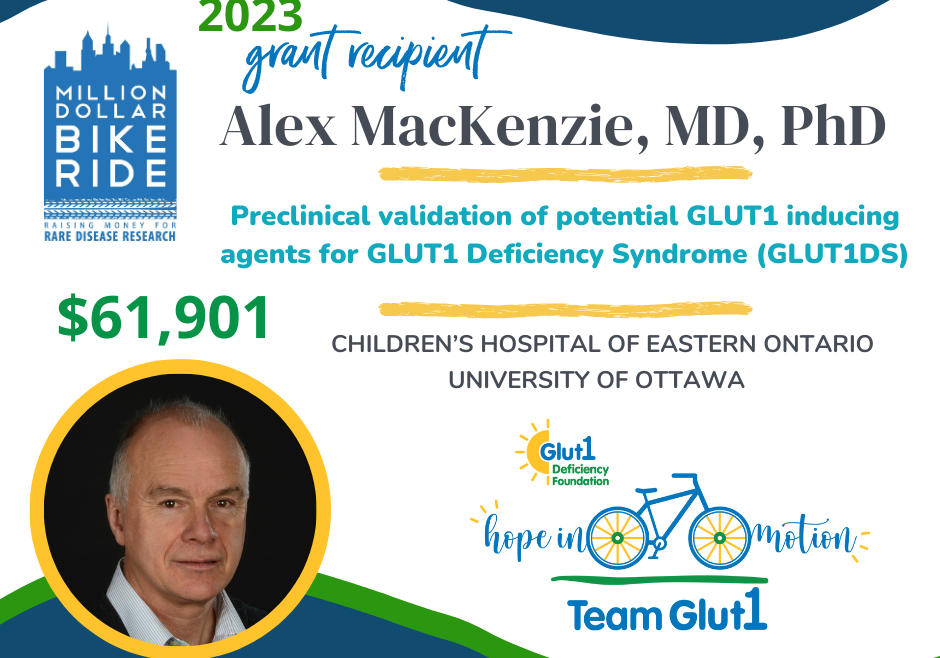Q & A about METAGlut1

Sandra Ojeda, PhD
Science Director – Glut1 Deficiency Foundation
Recently, a paper about a multi-center study for a blood test to diagnose Glut1 Deficiency was published. The title of the publication is: “Prospective Multicenter Validation of a Simple Blood Test for the validation of Glut1 Deficiency Syndrome”. Some of the authors are Dr. Fanny Mochel, the director of the Reference Center for Neurometabolic Diseases – La Pitié-Salpetriere Hospital in Paris, Dr. Darryl De Vivo, Professor Emeritus at Columbia University Irving Medical Center, and Dr. Vincent Petit, the CEO of METAFORA Biosystems.
The goal of this publication was to validate the diagnostic performance of METAglut1, a simple blood test that quantifies Glut1 on the red blood cells surface.
Due to the importance of this publication to our community, we decided to ask Dr. Vincent Petit for more information regarding the test as well as other aspects important to consider. Below you will find the questions and answers.
We thank Dr. Petit for taking the time to answer these questions, but mostly we thank him and all the team working with him for making this test available for our community.
How does the METAglut1 test work?
We have designed METAglut1 to be a routine test to help physicians simply assess Glut1DS in patients with neurological symptoms.
It turns out that Glut1 is highly expressed on red blood cells. METAglut1 is leveraging this biology thanks to a unique reagent we have designed to specifically bind to Glut1; the test allows for a precise quantitation of Glut1 expression in red blood cells, which is low in most patients.
A simple blood draw is required with no need for fasting, so it’s very easy to perform in outpatient clinics. The blood sample is then sent to a central lab equipped to perform the assay, and turnaround time is typically 24 to 72 hours.
How reliable is the test? Can you explain more about sensitivity and specificity?
We have shown previously that more than 24% decrease of Glut1 at the red blood cells surface characterizes Glut1DS well.
METAglut1 diagnostic performances have been confirmed through a large multicenter validation study in France.
The test is 80% sensitive, which means that the test will detect disease in 4 patients out of 5, which is equivalent to that of glycorrhachia, or the concentration of glucose in cerebrospinal fluid.
Moreover, it is almost 100% specific, which means that if it is positive, it’s almost sure that the neurological symptoms are due to Glut1DS.
More technically, the positive and negative predictive values are high, which makes the test very useful for screening patients presenting with symptoms compatible with Glut1DS in the daily practice as they give an idea of the confidence a clinician may have when faced with a positive or negative result.
All these results have been published in May in Neurology, a leading medical journal.
What are the advantages of the test compared to other diagnostic tools already used for Glut1 Deficiency?
The advantage of METAglut1 is that it combines good diagnostic performance with simplicity of testing and a quick turnaround time. It is done with a simple blood draw with no need for fasting, it is doable in outpatient settings, and results are back in two days. This simplicity comes with diagnostic performance equivalent to that of measuring glucose in the cerebrospinal fluid.
What do you see as the key role for METAglut1 in diagnosis or disease management?
METAglut1’s mission is to help find the more than 90% of patients who are currently undiagnosed and wandering through a detrimental diagnostic odyssey.
Hopefully, testing more systematically with METAglut1 can translate into more patients getting diagnosed and helping it happen sooner after symptoms begin.
Another key role of the test is to help raise awareness around Glut1DS, to provide benefits from a simple blood test to search for the disease, and to help more and more physicians incorporate Glut1DS into their daily practice.
How viable is it to implement this test all around the world?
METAglut1 is a cytometry-based test, which means that it can be implemented in testing labs experienced with this kind of assay. This is the case for university laboratories and large private laboratories, so we don’t see any major technical constraint for central labs to implement METAglut1 all around the world.
And it is part of our mission to make it available everywhere it can benefit patients.
Would it be possible to use this test as a newborn screening tool in the near future?
This is clearly an objective for us, and for many physicians who work closely with us. Glut1DS should be tested at birth, and METAglut1 is a simple blood test, so it completely makes sense to implement it for newborn screening.
We consider it to be technically and practically doable, but it requires some validation to demonstrate that it meets the newborn screening guidelines.
We wish to be part of any initiative aimed at introducing the assay for newborns.
Can you share more about the process of reimbursement approval of this test in France?
This is a great news for the patients and physicians indeed!
In France, METAglut1™ test is about to be reimbursed by the French healthcare system; this will allow physicians to test as much as necessary to help end the medical wandering of Glut1DS patients.
The decision to cover the test has been made by the French Health Ministry and the French Health Authority, after considering that medical wandering happens for most patients. On the other hand, the ketogenic diet is available as a treatment to help manage the condition. Therefore detection is a top health priority, and METAglut1 performances are good enough to tackle this challenge.
Given a clinical picture raising the suspicion of Glut1DS, METAglut1™ can be performed as a first-line test. The goal is to change the current situation so that 80% of patients would be diagnosed instead of less than 10%.
What would it take to make this test available and reimbursed in other countries?
METAglut1 is fully available in France, thanks to partnerships with Cerba HealthCare, a leading testing lab, and Paris Hospitals Network, and to the reimbursement.
We aim to reproduce this success story in other countries by first finding a central lab to partner with, and second by our full dossier of gathering clinical evidence and health technology assessments to be made available to payers.
What would you like the patients and families in our community to know about METAglut1, what’s the take home message for them?
METAglut1 is diagnosing patients on a routine basis in France, and we hope this blood test will significantly decrease the number of patients still suffering from medical wandering.
And I am also convinced that the blood test can trigger a better awareness around the disease: adding a simple, blood screening test to their toolbox can help physicians “think Glut1DS more often”, thus directly increasing the number of patients diagnosed and shortening time to diagnosis which is so essential for alleviating neurological symptoms!



